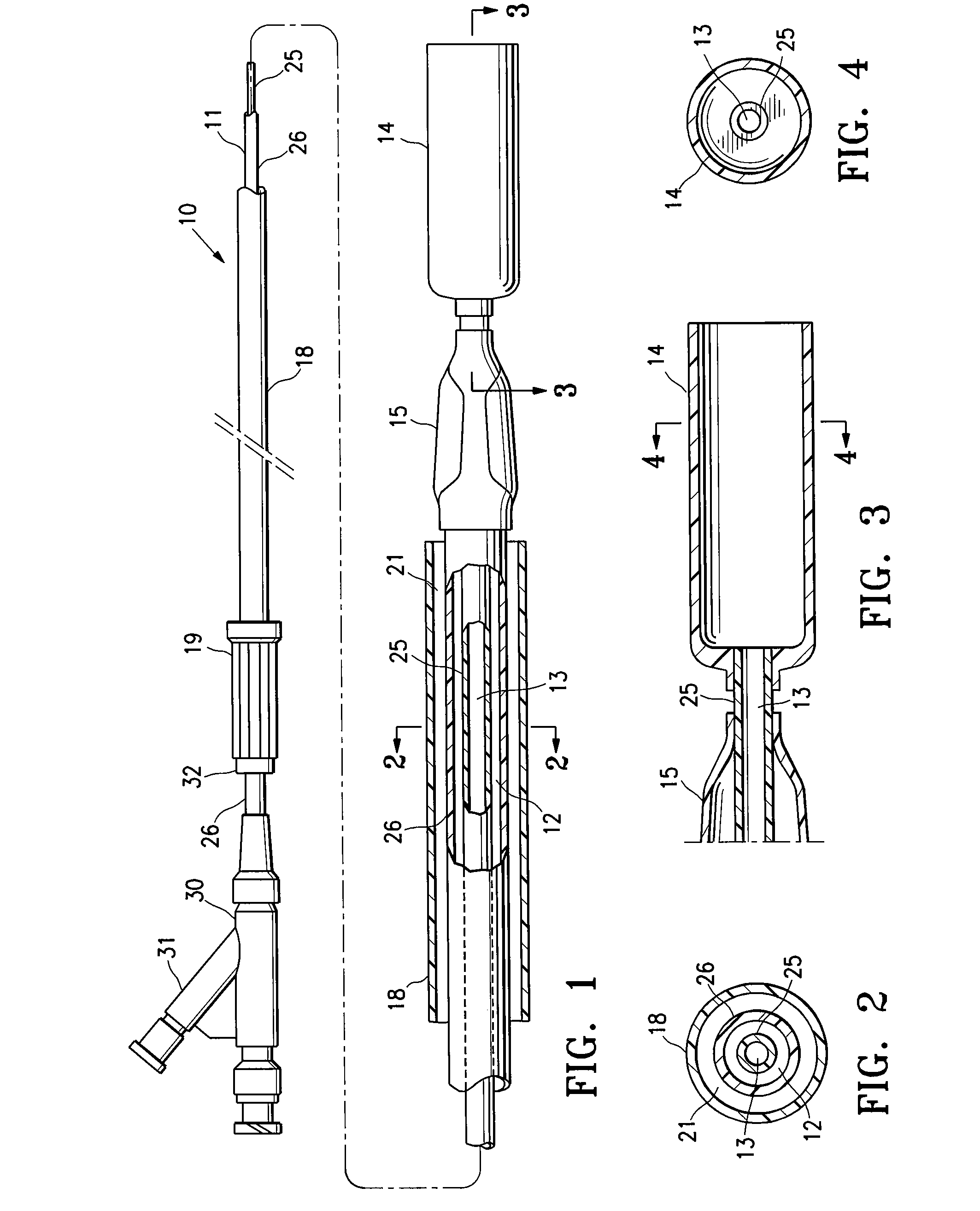Balloon catheter having a regrooming sheath and method for collapsing an expanded medical device
a technology of balloon catheter and expanded medical device, which is applied in the field of balloon catheter, can solve the problems of extreme danger to patients and the need for the catheter shaft to retain sufficient flexibility, and achieve the effects of convenient maneuvering, low profile and sufficient flexibility
- Summary
- Abstract
- Description
- Claims
- Application Information
AI Technical Summary
Benefits of technology
Problems solved by technology
Method used
Image
Examples
Embodiment Construction
[0024]FIG. 1 illustrates an elevational, partially in section, view of a balloon catheter 10 embodying features of the invention, generally comprising an elongated catheter shaft 11 with a proximal end, a distal end, an inflation lumen 12, a device lumen 13, and a distal tip 14 configured to slidably receive at least a portion of an expanded section of an expandable device, such as an embolic protection device 40 (see FIG. 5), to collapse the expanded section to a collapsed configuration. The balloon catheter 10 has an inflatable balloon 15 on a distal shaft section with an interior in fluid communication with the inflation lumen 12, such that the balloon can be inflated from a noninflated configuration to an inflated configuration upon the introduction of inflation fluid to the balloon interior, and deflates to a deflated configuration upon the withdrawal of the inflation fluid. FIG. 1 illustrates the balloon 15 in the low profile noninflated configuration, which typically has wing...
PUM
 Login to View More
Login to View More Abstract
Description
Claims
Application Information
 Login to View More
Login to View More - R&D
- Intellectual Property
- Life Sciences
- Materials
- Tech Scout
- Unparalleled Data Quality
- Higher Quality Content
- 60% Fewer Hallucinations
Browse by: Latest US Patents, China's latest patents, Technical Efficacy Thesaurus, Application Domain, Technology Topic, Popular Technical Reports.
© 2025 PatSnap. All rights reserved.Legal|Privacy policy|Modern Slavery Act Transparency Statement|Sitemap|About US| Contact US: help@patsnap.com



